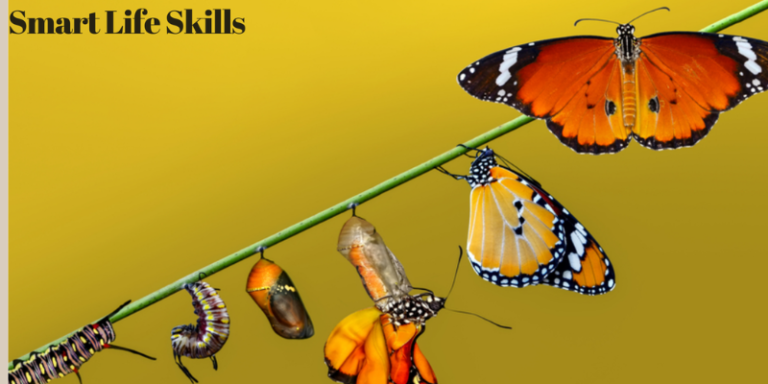The transformation of a caterpillar into a butterfly is one of nature’s most remarkable processes, symbolising profound change and resilience. This metamorphosis, particularly the butterfly’s struggle to break free from its cocoon, provides a poignant metaphor for the necessity of challenges in personal growth and strength.
The process begins when a caterpillar spins a cocoon around itself, entering a phase known as the pupal stage. Within this protective casing, the caterpillar undergoes significant changes, breaking down its old body and forming the structures of a butterfly. When the time comes, the butterfly must break out of the cocoon, a struggle that is not only crucial but necessary for its survival.
Struggle as a Catalyst for Growth
Biologists have studied the metamorphosis of butterflies extensively, revealing that the effort required to escape the cocoon plays a vital role in strengthening the insect. As Dr. David Suzuki explains in his book, The Nature of Things, the struggle to break free from the cocoon forces fluid into the butterfly’s wings, making them strong enough for flight (Suzuki, 1990). Without this struggle, the butterfly would emerge weak and incapable of sustaining its own life.
This principle is mirrored in human experiences. Struggles and challenges can be seen as opportunities for growth. Psychologist Angela Duckworth, in her seminal work Grit: The Power of Passion and Perseverance, highlights that perseverance through hardship is a key determinant of success (Duckworth, 2016). Just as the butterfly’s struggle is essential for its physical development, human beings often find that overcoming difficulties fosters resilience and fortitude.
The Necessity of Adversity
The concept that adversity is necessary for growth is not new. It is deeply embedded in philosophical and psychological discourse. Viktor Frankl, a renowned psychiatrist and Holocaust survivor, argued in his book Man’s Search for Meaning that suffering can lead to personal growth and a deeper understanding of life’s meaning (Frankl, 1946). Frankl’s observations during his time in concentration camps led him to believe that finding purpose in suffering can transform one’s outlook and strength.
Moreover, contemporary research supports the idea that dealing with stress and adversity can lead to psychological resilience. A study published in the Journal of Personality and Social Psychology found that individuals who experienced moderate levels of adversity reported better mental health and well-being compared to those who experienced high levels or no adversity at all (Seery, Holman, & Silver, 2010). This indicates that some degree of struggle is beneficial, fostering resilience and adaptive coping mechanisms.
Embracing Challenges
In practical terms, embracing challenges and viewing them as opportunities for growth can significantly impact personal and professional development. Leadership expert John C. Maxwell, in his book The 15 Invaluable Laws of Growth, suggests that the willingness to confront and overcome obstacles is a hallmark of effective leadership and personal success (Maxwell, 2012). Maxwell’s law of the rubber band posits that growth stops when individuals stop stretching themselves, much like a rubber band loses its elasticity when not used.
Furthermore, in an educational context, promoting a growth mindset—believing that abilities can be developed through hard work and perseverance—has been shown to improve students’ resilience and academic performance. Carol Dweck’s research on mindset reveals that students who embrace challenges and learn from criticism show greater improvement and motivation (Dweck, 2006).
The butterfly’s struggle to emerge from its cocoon encapsulates a universal truth: struggle and adversity are not merely obstacles but are integral to growth and strength. This natural process teaches us that enduring and overcoming challenges can lead to significant personal development. From the insights of biologists and psychologists to the philosophical reflections of thinkers like Viktor Frankl, it is evident that embracing and persevering through difficulties can transform individuals, making them stronger and more resilient. Just as the butterfly’s wings are strengthened through its struggle, so too can humans find empowerment and growth through their own adversities.
References
Duckworth, A. (2016) Grit: The Power of Passion and Perseverance. Scribner.
Dweck, C. S. (2006) Mindset: The New Psychology of Success. Random House.
Frankl, V. E. (1946) Man’s Search for Meaning. Beacon Press.
Maxwell, J. C. (2012) The 15 Invaluable Laws of Growth. Center Street.
Seery, M. D., Holman, E. A., & Silver, R. C. (2010) “Whatever Does Not Kill Us: Cumulative Lifetime Adversity, Vulnerability, And Resilience”. Journal of Personality and Social Psychology. 99(6), pp. 1025-1041.
Suzuki, D. (1990) The Nature of Things. Stoddart.









